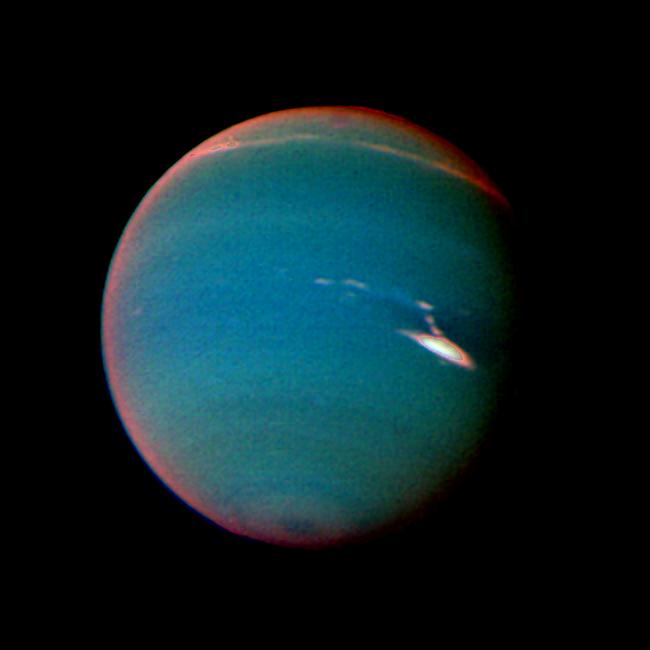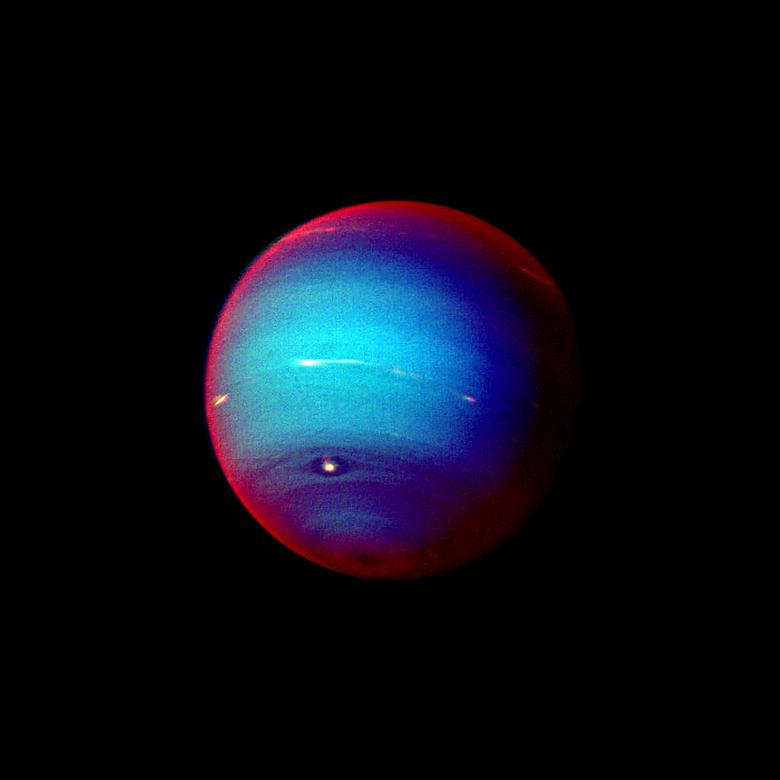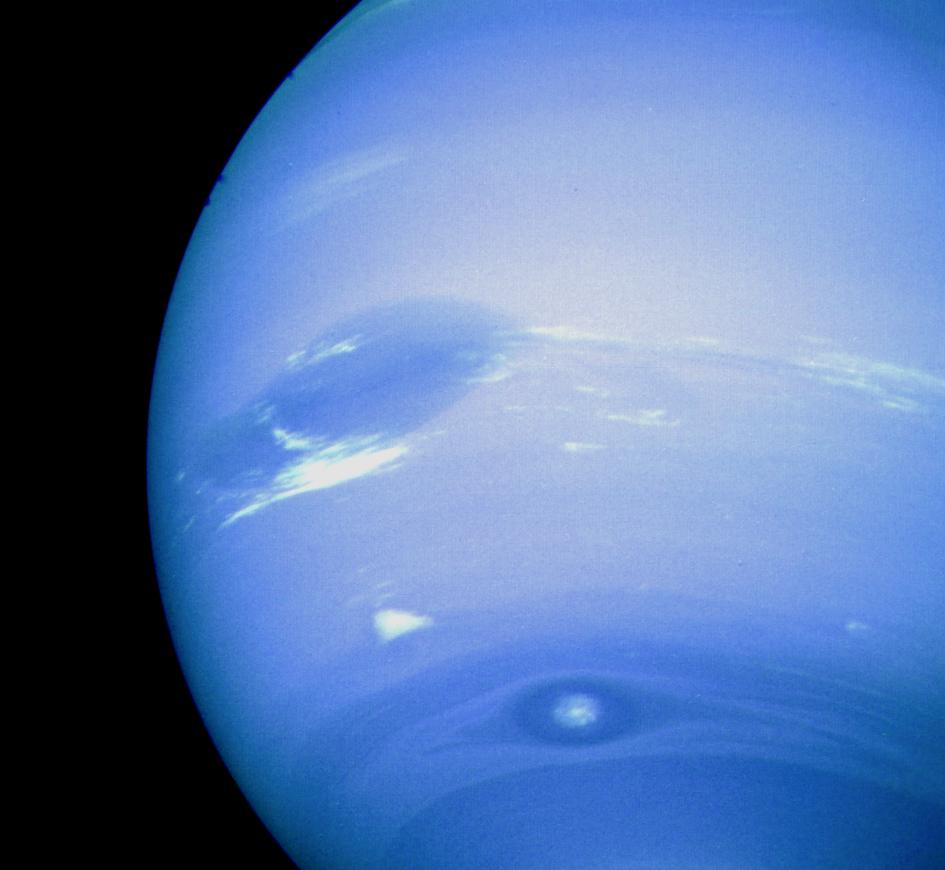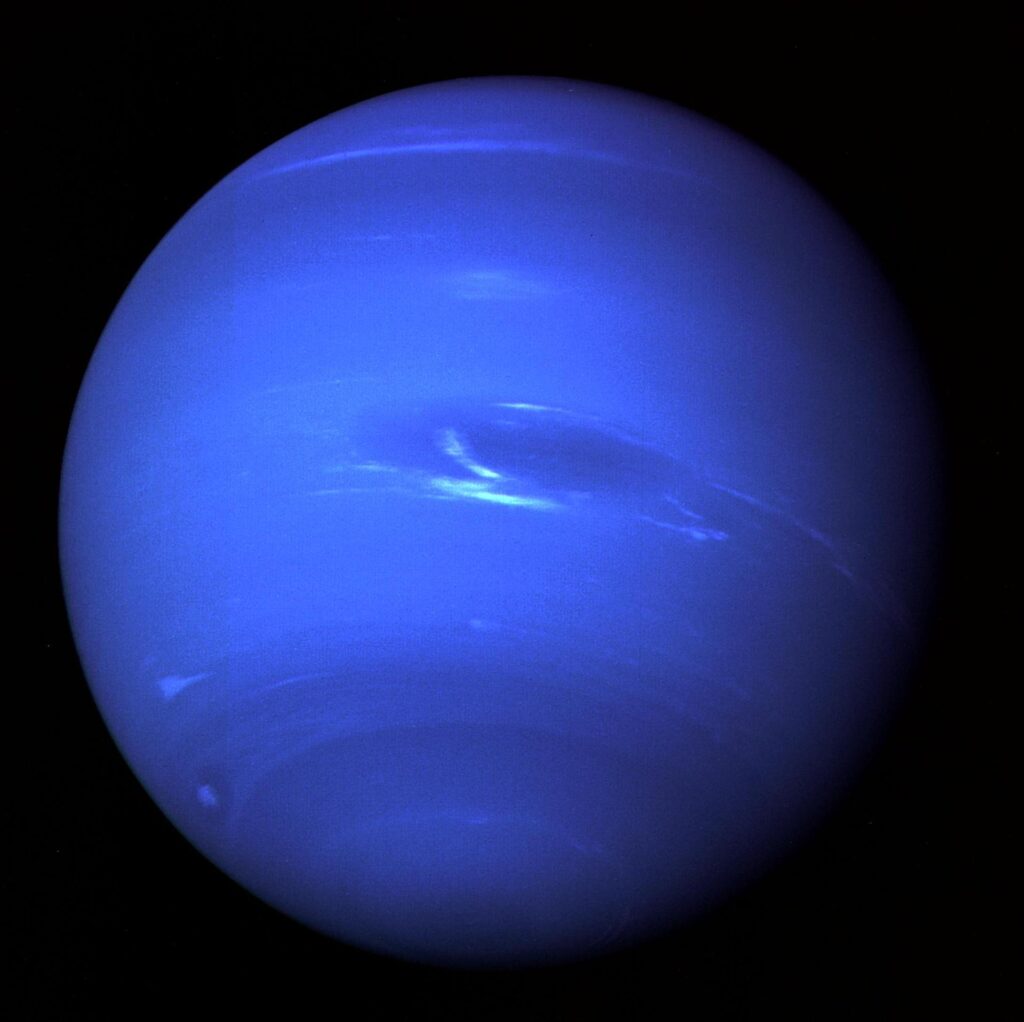Table of Contents
The Invisible Force Beyond Sight
Long before telescopes existed, ancient skywatchers tracked the movements of visible planets, building entire mythologies around celestial objects. Mercury, Venus, Mars, Jupiter, and Saturn were all known and named in ancient times, guiding calendars and influencing cultures. But there was another planet, exerting gravitational pull and subtly altering the orbits of its neighbors—completely unseen. This hidden world was Neptune, lying far beyond the observational reach of early astronomers. Its darkness and distance kept it shrouded in cosmic secrecy for millennia, making it the only classical planet unknown to the ancients despite its silent role in shaping the solar system’s mechanics.
Despite having no knowledge of the actual celestial body, early civilizations still formed a connection through mythology. The Romans revered Neptune as the god of the sea, often depicted wielding a trident and ruling over oceans and storms. In Greek mythology, Poseidon carried the same identity and authority. These deities were associated with immense, unpredictable power—an appropriate metaphor for the unseen giant orbiting far from Earth. Neptune, once discovered, was named after this ancient god, tying modern astronomical discovery to timeless myth. The symbolic connection captures humanity’s instinct to personify and revere the unknown forces that govern nature.
A Planet Found on Paper
In the early 1800s, astronomers noticed that Uranus wasn’t moving as predicted, suggesting the gravitational pull of an unknown object. Rather than relying on telescopic searches, two mathematicians—Urbain Le Verrier in France and John Couch Adams in England—used Newton’s laws to predict the existence and position of a new planet. Their calculations were remarkably precise, leading German astronomer Johann Galle to confirm the planet’s presence in 1846. The discovery marked the first time a celestial body was found through mathematics alone, and Neptune became a symbol of science’s growing power to reveal the unseen. It redefined how we explore space.
This landmark event ushered in a new era of astronomical discovery, where mathematics became a trusted guide in navigating the cosmos. Galle’s telescope, directed by Le Verrier’s precise coordinates, found the planet within just one degree of the predicted location. Unlike earlier discoveries that relied on chance sightings, this moment proved that human intellect could uncover distant worlds through reason and calculation. Neptune’s discovery validated Newtonian physics on a cosmic scale and inspired a deeper confidence in scientific prediction. The method used set a precedent, influencing how future astronomers searched for planets, moons, and other celestial phenomena.
The Distant World of Ice and Orbit
Orbiting nearly 4.5 billion kilometers, 8th planet from the Sun, this planet is the most distant of the known eight in our solar system. It takes an astonishing 165 Earth years to complete just one revolution around the Sun, meaning a single year on this world spans more than a human lifetime. Its sheer distance results in extremely cold conditions, with average temperatures plunging near -200°C (-328°F). Despite its isolation, Neptune maintains a strong gravitational influence and remains a critical member of the solar system’s architecture. The remoteness of this icy world highlights just how vast and mysterious our planetary neighborhood truly is.
Classified as an ice giant rather than a gas giant, this planet shares the title with Uranus due to its unique internal makeup. While Jupiter and Saturn are dominated by hydrogen and helium, this world has a dense core wrapped in layers of water, ammonia, and methane ices. These frozen compounds contribute to the planet’s bluish hue and define its icy character. At the very center lies a rocky core, believed to be roughly the size of Earth. Neptune’s distinct composition sets it apart, making it a valuable object of study for scientists seeking to understand the diversity of planetary structures.
Supersonic Winds and Shifting Storms
This distant world is home to the fastest winds ever recorded in the solar system, with gusts reaching an astonishing 2,100 kilometers per hour—faster than the speed of sound. These powerful jet streams rip through the planet’s atmosphere, creating an incredibly violent and energetic climate. Voyager 2’s historic 1989 flyby captured evidence of this extreme weather, including massive storm systems that rival Earth in size. One such system, the Great Dark Spot, measured roughly 13,000 kilometers across and vanished just a few years later, showcasing the unstable and ever-changing nature of this distant environment. Neptune’s atmosphere remains a mystery of power and motion.
The planet’s signature deep blue color is not just for show—it’s a product of methane gas in the upper layers of its atmosphere. Methane absorbs red wavelengths of sunlight while reflecting blue, giving the planet its striking appearance. This thick, gaseous envelope also serves as the stage for colossal tempests and rapidly shifting cloud formations. Storms on this world appear and fade over short periods, unlike the centuries-old Great Red Spot on Jupiter. Neptune’s rapid winds and volatile weather patterns suggest complex atmospheric dynamics that scientists are still working to fully understand through remote sensing and modeling techniques.

A Subtle Ring System and a Captured Giant
Unlike the brilliant rings of Saturn, this planet’s ring system is faint and delicate, consisting of narrow arcs made from dark material that reflects very little sunlight. These rings were definitively observed by Voyager 2 in 1989, confirming earlier ground-based evidence of their presence. Scientists believe the particles may be coated in organic compounds or radiation-darkened material, giving the rings their shadowy appearance. Some of the rings are incomplete, forming arcs rather than full circles—a phenomenon not seen in other planetary systems. Though visually understated, these features are a key part of Neptune’s outer environment and add complexity to its distant realm.
Orbiting within this shadowed system is a group of 14 known moons, with one in particular standing out: Triton. Larger than Pluto, Triton is especially notable because it orbits in a retrograde direction, opposite the rotation of its host planet. This unusual motion strongly suggests that Triton was not formed alongside its current planet but was instead captured by gravity, possibly from the Kuiper Belt. Such a dramatic capture likely disturbed the planet’s original moons, reshaping its entire satellite system. Neptune’s gravitational dominance over Triton reveals the immense forces at play in the remote reaches of our solar system.
Building a Giant in a Young Solar System
Roughly 4.5 billion years ago, in the swirling chaos of the early solar system, this distant planet began its life as a dense, rocky core. Surrounded by gas, ice, and dust in the protoplanetary disk, it slowly gained mass through a process called accretion. Its growing gravity allowed it to attract large amounts of icy material, which helped shape its identity as an ice giant. The cold, distant region where it currently resides presents a mystery: the environment there had far less material available. This has led scientists to rethink where Neptune may have originally formed and how it ended up so far from the Sun.
Theories now suggest that this planet may have started closer in—perhaps near Jupiter or Saturn—where conditions were more favorable for planet-building. As the solar system evolved, interactions with other massive bodies could have pushed it outward to its current orbit. This idea, known as planetary migration, helps explain how such a large world could exist in such a sparse region of space. Neptune’s journey to the edge of the solar system reflects a dynamic early history shaped by gravitational tug-of-war. Its final position reveals how volatile and shifting the architecture of our planetary system once was.

Pressures, Heat, and Hidden Layers
Beneath the swirling clouds and icy atmosphere lies a world of crushing pressure and searing heat. The interior is believed to contain a solid core made of rock and metal, surrounded by layers of ice and fluid. As depth increases, so do the extreme conditions—scientists estimate that temperatures can soar to 7,000°C (12,600°F), even hotter than the surface of the Sun. These conditions may alter matter into unusual forms that can’t be replicated on Earth. Despite decades of study, the interior remains largely unexplored, with Neptune offering only indirect clues through its gravitational field, magnetic behavior, and limited data from past flybys.
One of the most fascinating hypotheses about this planet’s interior involves the potential formation of solid diamonds. Under enormous pressure, carbon atoms may compress into crystalline structures and fall like rain through the thick layers. Laboratory experiments on Earth have shown that such a transformation is possible under similar pressures. If accurate, this process could mean that Neptune contains layers of diamond-studded materials slowly sinking toward its core. These dramatic conditions give insight into the exotic possibilities of planetary interiors and highlight how little is still known about what lies beneath Neptune’s surface layers.
A Magnetic Field Unlike Any Other
This planet’s magnetic field is dramatically misaligned, tilted 47 degrees from its axis of rotation—an angle far greater than Earth’s modest 11 degrees. Such a stark tilt results in a wildly lopsided magnetic environment that sweeps around the planet in an uneven pattern. Unlike the relatively symmetrical fields of Earth or Jupiter, this one appears chaotic, with regions of strength and weakness scattered unpredictably. The field’s origin may not lie in a centralized core, as with Earth, but in a shell of electrically conductive fluid closer to the planet’s surface. Neptune’s magnetic behavior challenges standard planetary models and raises questions about magnetic generation processes.
Adding to its uniqueness, the field isn’t just tilted—it also wobbles and fluctuates rapidly as it moves through the planet’s dense atmosphere. These variations create an unpredictable magnetosphere that likely affects how particles from the solar wind interact with the planet. Shifting magnetic boundaries can trap and release charged particles in sudden bursts, leading to unusual auroral activity near unexpected regions. Neptune’s magnetic field doesn’t just differ in angle or location; its entire structure is dynamic and complex. Continued observation may help scientists understand magnetic behaviors on other distant planets and refine models of planetary magnetism.
A Lone Encounter Across the Void
In 1989, NASA’s Voyager 2 became the first and only spacecraft to visit this distant world, capturing the first close-up images ever taken of its surface and surroundings. Traveling over 4.3 billion kilometers, the probe offered a brief but transformative glimpse, revealing a dynamic atmosphere, faint rings, and a moon system full of surprises. The data collected during the flyby uncovered striking details such as high-speed winds and the mysterious Great Dark Spot. Voyager 2’s encounter with Neptune lasted mere hours, yet it expanded humanity’s understanding of the outer solar system in ways that ground-based telescopes never could.
Despite the success of Voyager 2’s mission, no follow-up spacecraft has visited this remote planet in over three decades. Without additional missions, key questions remain unanswered about Neptune’s internal structure, magnetic field, and long-term atmospheric behavior. Future proposals include orbiters equipped with advanced instruments, atmospheric probes to measure pressure and composition, and long-term observational platforms. These could dramatically improve our understanding of this ice giant’s complexity. Neptune remains an enticing target for exploration, and a return mission could unlock decades of discoveries left untouched since that single, historic flyby.

Sculptor of the Solar Frontier
This distant planet serves as a powerful architect of the outer solar system, its gravity reaching far beyond its orbit to shape the paths of countless icy objects. The Kuiper Belt—a vast region filled with frozen debris, dwarf planets, and comets—is strongly influenced by the gravitational pull of Neptune. Some of the most well-known trans-Neptunian objects, like Pluto and Haumea, exist in orbital resonances, meaning they complete a set number of orbits for every few Neptune completes. These gravitational patterns prevent close encounters and maintain long-term stability. Without this influence, the outer solar system could become far more chaotic and unstable.
The gravitational interplay orchestrated by this planet not only stabilizes objects but also helps astronomers trace the solar system’s evolutionary past. Observations show that certain orbits are tightly packed into neat configurations, implying a guiding force over billions of years. Neptune’s role extends to shepherding distant objects into specific paths, clearing others from unstable zones, and creating natural boundaries within the solar system. Its unseen hand molds the architecture of the region beyond, acting as a silent regulator of motion and order in one of the most remote and mysterious areas of space.
A Blueprint for Distant Worlds
As space telescopes scan the galaxy, they continue to discover exoplanets that closely resemble this ice giant in both size and structure. These so-called “Neptune-like” or “sub-Neptune” planets are among the most common types found outside our solar system, yet their nature remains mysterious. Many fall within a size range between Earth and Neptune, prompting scientists to use our own ice giant as a baseline for comparison. Understanding these exoplanets could answer big questions: Why are they so abundant? What are their atmospheres made of? Neptune offers a local example to test hypotheses that could reshape our view of how planets evolve around distant stars.
Some of these distant planets orbit within their star’s habitable zone, raising the possibility that their moons—if they exist—could support life. However, their thick atmospheres and icy compositions pose challenges to habitability. By analyzing the temperature, density, and chemical makeup of Neptune, astronomers refine models used to interpret exoplanet data. Missions like the James Webb Space Telescope now provide detailed measurements of exoplanet atmospheres, revealing unexpected traits like cloudy skies or unusual gas mixtures. Neptune remains a vital reference, helping scientists unravel the nature of planets far beyond our solar system and guiding the ongoing search for extraterrestrial environments.

The Next Frontier Awaits
Though its mysteries continue to intrigue scientists, this distant planet has not received a dedicated mission since Voyager 2’s flyby over three decades ago. Researchers have proposed several concepts, ranging from orbiters that could map its surface in detail to atmospheric probes designed to plunge into its dense clouds. Some ideas even include landers aimed at Triton, the planet’s largest moon, which may harbor geological or cryovolcanic activity. A future mission would offer the opportunity to study Neptune up close for extended periods, gathering crucial data on its structure and dynamics. The science community continues to push for such an ambitious return.
As spacecraft design and propulsion technologies evolve, the barriers that once made this journey seem impossible are slowly being overcome. Solar-electric propulsion, nuclear power, and compact scientific instruments could make a mission more efficient and cost-effective than ever before. Neptune offers a rich target for exploring extreme weather, tilted magnetism, and planetary formation theories. With agencies like NASA and ESA expressing interest in future ice giant missions, the vision of returning is moving closer to reality. A modern exploration effort could redefine our understanding of this distant world and provide invaluable clues about planetary systems throughout the galaxy.
How useful was this post?
Click on a star to rate it!
Average rating / 5. Vote count:
No votes so far! Be the first to rate this post.
Author
-
Meet Dr. Kendall Gregory, a highly accomplished professional with a remarkable academic background and a deep passion for empowering individuals through knowledge. Dr. Gregory’s educational journey began with a Bachelor of Science degree, followed by a Doctor of Chiropractic Medicine, focusing on diagnosing and treating musculoskeletal conditions. He further expanded his expertise with a Master's degree in Oriental Medicine, specializing in acupuncture and Chinese herbology, and a Master's degree in Health Care Administration, emphasizing his dedication to improving healthcare systems. Dr. Gregory combines his extensive knowledge and practical experience to provide comprehensive and integrative healthcare solutions. Through his writings, he aims to inspire individuals to take charge of their health and make informed decisions.
View all posts







